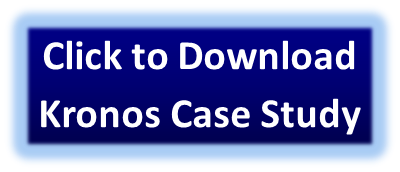Today’s B2B buyers, empowered by a 24/7 information-rich digital medium, have upended the traditional sales and marketing model for success. With this dramatic shift in buyer behavior, you have to make a correspondingly radical shift in your marketing and sales approach to buyer engagement. Rather than basing content strategies on features and benefits, “insight selling” seeks to redefine your prospect’s purchase criteria in favor of your solution. You do this by providing compelling insights with real commercial value – in other words, highlighting the connection between your differentiators and your prospect’s key concerns. A thought-provoking case study by CEB, defines a commercial insight approach as one which “elevates customer conversations and reframes their needs and the way they assign value to your points of differentiation.”*
Commercial insights in action!
CEB’s case study tells the story of how Xerox developed a commercial insight in which they successfully reoriented their sales and marketing approach for a key segment – K to 12 schools. Xerox’s primary impediment to increasing penetration in this market was their target buyer’s significantly constrained budget. Having identified a core customer concern of improving student test scores, the Xerox team was able to understand what their customer believed affected this concern. Among those concerns were such things as student engagement, inspired teachers, and interactive learning aids. The Xerox team understood that children are more engaged in learning when materials are presented in vibrant color versus black and white. They used research supporting this insight on the positive impact of color on student performance to bolster Xerox’s new messaging. A comprehensive content strategy was developed around this single insight to successfully reframe Xerox’s color services for this segment from costly and unnecessary, to vital in promoting long-term learning.
Developing your own commercial insights
You can develop commercial insights to challenge buyers’ thinking by having marketing and sales teams collaborate to better understand the target buyer and brainstorm together on new approaches. Use the following guide to co-develop commercial insights designed to disrupt how prospects and customers view their businesses and challenges:
- Understand your prospect’s ultimate goals and prioritize their primary concerns.
- Identify key business and industry segment drivers and sub-drivers – what drives buyers in each segment to action/investment (whether in time or money)? E.g. for schools, student achievement is clearly one significant driver.
- Map the relationships between these factors (goals, concerns, drivers, sub-drivers) to understand cause and effect.
- Detail your own offering’s differentiators and key strengths with respect to the drivers.
- Explore where in your prospect’s relationship map you can inject intervention points to create new value or achieve a more effective, efficient result. CEB identifies 3 types of interventions:
- Reveal a new or unrecognized driver (e.g. the ability to address a previously underserved population at low incremental cost)
- Effect the magnitude of a driver, or demonstrate that its effect is different than imagined (e.g. boost student achievement)
- Surface a previously unknown relationship (e.g. vibrant color aids student performance).
- Test assumptions regarding your commercial insight(s) – begin with sales to refine your insight before testing your idea(s) via prospect surveys or by speaking with existing customers.
- Create a compelling story line, supported by data, to give prospects cause to question their conventional perspective and thinking.
- Create a content plan around your viable and unique commercial insight. All content should be tightly focused to disrupt prospect thinking, so that their purchase criteria are reset in favor of your solution. Cut all content which doesn’t serve this purpose.
Your goal with insight selling is to break down common, narrowly-focused buyer perspectives by providing credible, relevant, and compelling connections between your differentiators and your prospects’ top priorities and goals. In so doing, your differentiated offering is reframed not as a “nice to have,” but rather as a necessary and unique solution both to your prospects’ immediate needs as well as to their more strategic objectives. Testing your insights with existing customers or via prospect surveys, will provide you with valuable feedback, as well as a goldmine of data and content from which you can craft highly compelling messaging.
Read how Kronos used SimplyDIRECT’s demand-gen surveys to improve their customer insight. Download the Kronos case study now – click the button below.

Are you developing commercial insights that your sales team can use to engage prospects and close deals?
Reference:
* CEB Marketing Leadership Council®, Challenger Marketing Series, Case Study: Xerox, 2013.

